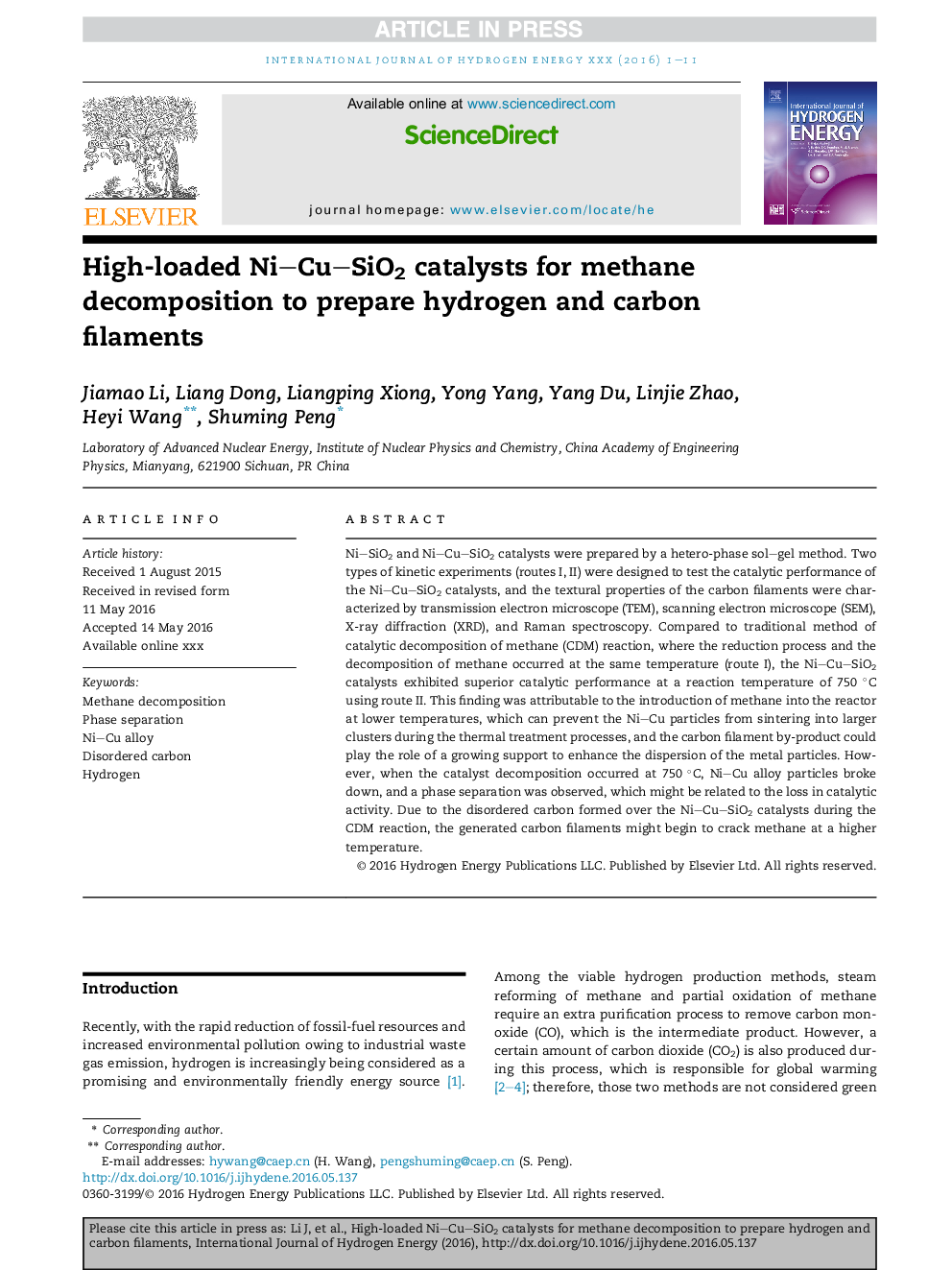| Article ID | Journal | Published Year | Pages | File Type |
|---|---|---|---|---|
| 7710125 | International Journal of Hydrogen Energy | 2016 | 11 Pages |
Abstract
NiSiO2 and NiCuSiO2 catalysts were prepared by a hetero-phase sol-gel method. Two types of kinetic experiments (routes I, II) were designed to test the catalytic performance of the NiCuSiO2 catalysts, and the textural properties of the carbon filaments were characterized by transmission electron microscope (TEM), scanning electron microscope (SEM), X-ray diffraction (XRD), and Raman spectroscopy. Compared to traditional method of catalytic decomposition of methane (CDM) reaction, where the reduction process and the decomposition of methane occurred at the same temperature (route I), the NiCuSiO2 catalysts exhibited superior catalytic performance at a reaction temperature of 750 °C using route II. This finding was attributable to the introduction of methane into the reactor at lower temperatures, which can prevent the NiCu particles from sintering into larger clusters during the thermal treatment processes, and the carbon filament by-product could play the role of a growing support to enhance the dispersion of the metal particles. However, when the catalyst decomposition occurred at 750 °C, NiCu alloy particles broke down, and a phase separation was observed, which might be related to the loss in catalytic activity. Due to the disordered carbon formed over the NiCuSiO2 catalysts during the CDM reaction, the generated carbon filaments might begin to crack methane at a higher temperature.
Related Topics
Physical Sciences and Engineering
Chemistry
Electrochemistry
Authors
Jiamao Li, Liang Dong, Liangping Xiong, Yong Yang, Yang Du, Linjie Zhao, Heyi Wang, Shuming Peng,
